|
A White Guy posted:I live in California and a particular park here is named 'Montaña de Oro' which translates very literally as Mountain of Gold I grew up near there! Half the time, the tilde is forgotten, and tons of people adjust the pronunciation appropriately. Which is to say, bad translations are not only valid, they're appropriate.
|
|
|
|

|
| # ? Apr 25, 2024 16:22 |
|
Hitlers Gay Secret posted:Thanks for being better than Google Translate. I don't know what you're trying to say, dude, if it's a bad translation it's a bad translation
|
|
|
|
Raserys posted:I don't know what you're trying to say, dude, if it's a bad translation it's a bad translation I'm saying thanks for putting more work into it than I planned to. Blame the "thumbs up" smiley for making it look more assholish. EDIT: idhrendur posted:bad translations are not only valid, they're appropriate. This is also true. GenderSelectScreen fucked around with this message at 18:39 on Feb 9, 2018 |
|
|
|
Rubix Squid posted:To take a note from the old names for regions of japan and how Hokkaido is named, I'd call it Konsando 金山道 or Ryusando 鉚山道. Don't know the Kanji but how about Sandeago
|
|
|
|
Unfortunately none of the kanjiblobs I could piece together make any sense there.
|
|
|
|
Well the Japanese also kept native Ainu names in some places in Hokkaido, Sakhalin and the Kuriles and wrote them in ateji (kanji chosen based on how they sound). Try this with Native American names to have lots of fun.
|
|
|
|
Raserys posted:Kogane doesn't mean gold, it means a small sum of money, and joutai doesn't mean state like a nation, it means state like a condition. A name like 小金の状態 means "in a state of very little money". Japanese place names are usually kanji compounds, for example, 金山 is read as either Kanayama or Kaneyama, both of which mean Gold Mountain. 山の金, yama no kane means, more literally, "mountain of gold", which, while not wrong, isn't the kind of name that's given to a place.
|
|
|
|
I looked up both, Kinzan had more restaurants and hotels while Kanayama was the name of towns, so I figured that would be more appropriate for the name of a region. You could just copy what they did with their northern colony and call it Tokaido 大東海道。遠い海道
|
|
|
|
Negrostrike posted:Well the Japanese also kept native Ainu names in some places in Hokkaido, Sakhalin and the Kuriles and wrote them in ateji (kanji chosen based on how they sound). Try this with Native American names to have lots of fun.
|
|
|
|
Where was the first Japanese colony, San Francisco? Just browsing Wikipedia for possibilities, there's Ohlone (Oorone/Ooron), Miwok (Mioku/Miwoku), Ahwaste (Awasute), and Yelamu (Eramu/Yeramu)
Raserys fucked around with this message at 16:17 on Feb 10, 2018 |
|
|
|
Who now has all colonized the Americas?
|
|
|
|
Ofaloaf posted:Why bother colonizing Brazil when you can conquer half of Spain? Yeah no, you were totally right. Romance north Africans forming one of the largest land empires in Europe out of traditionally naval-oriented regions is getting cooler and cooler as they keep eating Iberia.
|
|
|
|
Control of the empire is eventually going to come down to Romania, us, and the Africans. WHO WILL HOLD ALL THE MARBLES IN THE END? STAY TUNED.
|
|
|
|
Perhaps it will be someone completely out of left field (one can only hope).
|
|
|
|
Chapter 62: Golden Notions 1690-1709 As the 1600s came to an end and Gothia approached the turn of the century, the realm experienced another boom of expansion in both the New World and the Old. The direction that Pèitre IV had set for the country was followed by succeeding governments, even as different monarchs put their own spins on the Petrine policies laid out in the mid-seventeenth century.  Pèitre IV’s successor to the throne was his daughter, crowned Sibilla II on April 25th, 1690. While Pèitre had been an exceptional administration and capable diplomat, Queen Sibilla was a capable administrator and exceptional diplomat. Hampering both her bureaucratic and charismatic skills, however, was the Queen’s thirst for gold. Not only did her greed hinder her government’s ability to manage the royal fisc efficiently, but it also shaped major aspects of her foreign policy.  Two of Gothia’s most powerful colonies in the New World were in a state of great unrest, still grumbling under a mess of tariffs imposed on the territories by Pèitre IV to fund Gothia’s own independence movement and later wars of expansion.  Sibilla was inclined to keep the tariffs in place regardless of popular discontent, but she soon learned that unrest in the colonies was high enough to choke off the flow of revenue from the colonies to Gothia altogether, reducing tariff income in Gothia to a mere trickle. Reducing tariffs was unfortunately the only way to bring the flow of any gold back to the royal coffers, and Sibilla wanted that gold. 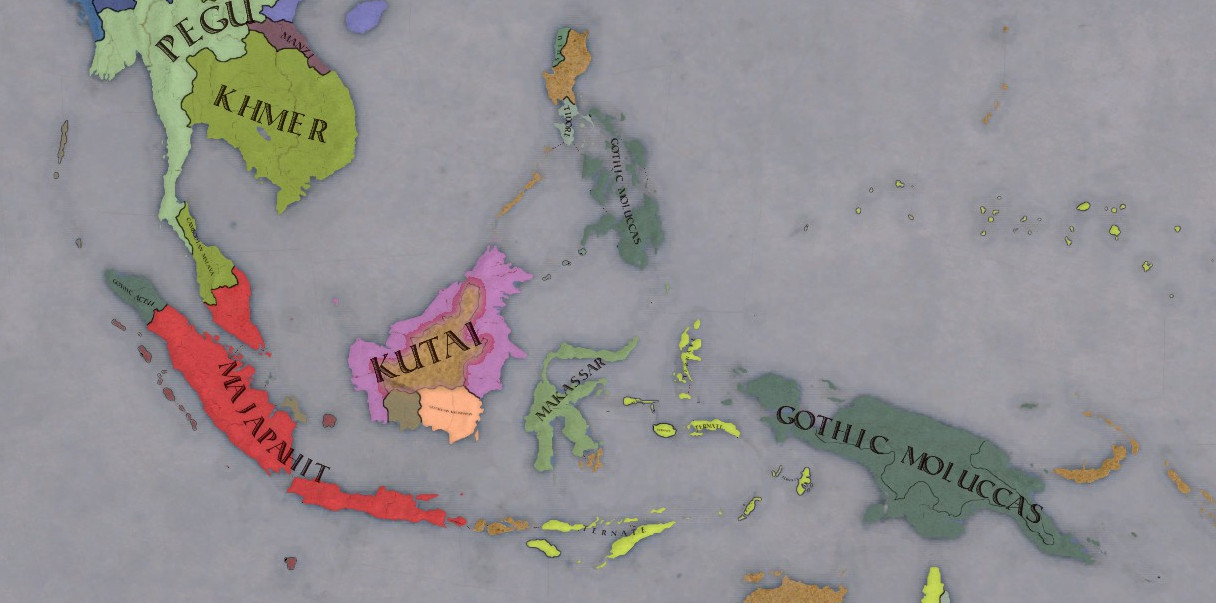 With the Gothic colonies teeming with dissent and liable to explode if any more revenue was squeezed from them, the Queen had to turn to other methods of expanding Gothia’s income. Further colonization in regions such as the northern archipelagos of the East Indies was one such option. One key archipelago, run by the Goths from Panay, offered fertile ground for further development, although one of the key ports in the region, Manila, was already held by colonists from the East Indies kingdom of Tidore. 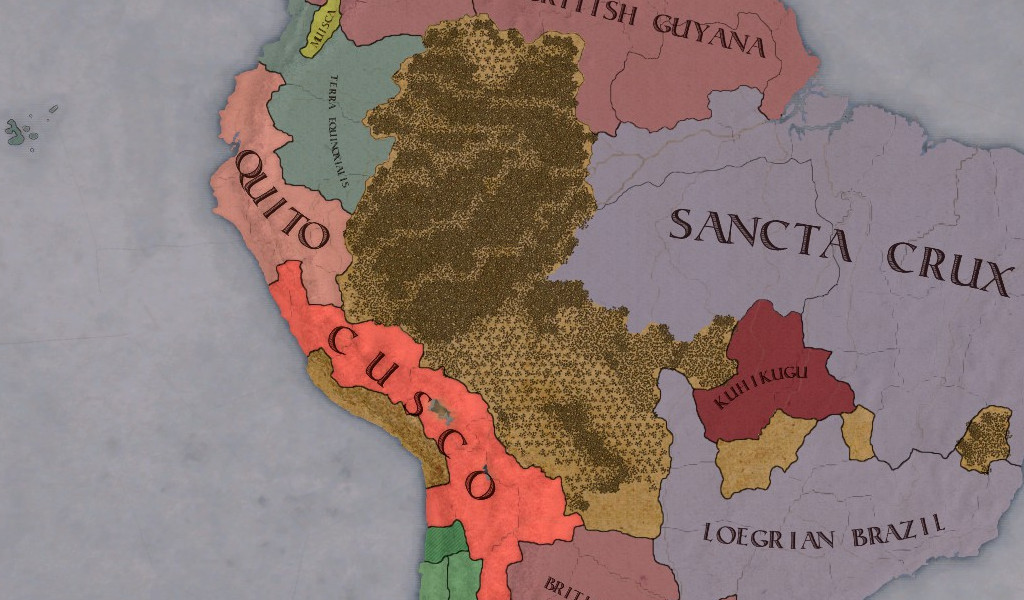 South of Gothia’s New World colonies laid the developed Quechuan realms of Quito, Cusco and minuscule Musica. The Quechuans had been untouched by European expansion, and had not even embraced the Christian faith. While they were rich and stable, their pagan faith made them diplomatically isolated within a continent dominated by Christian Europeans, making them a very tempting target. 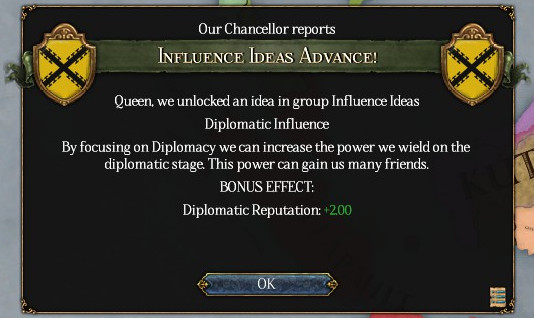 Another path to gold was further conquest in Europe. Queen Sibilla was confident that she could expand without invoking severe reactions from Gothia’s neighbors- she was an exceptional diplomat, after all, even if she was a little greedy.  Lastly, she could also move to incorporate the Duchy of Aquitania, a realm surrounded by Gothic territory that Pèitre IV had forcibly vassalized during his reign. 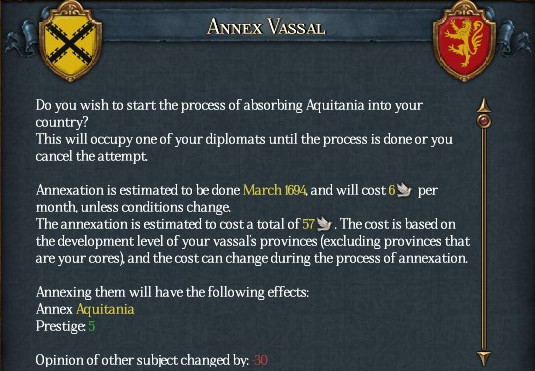 Steps towards integration actually began in 1693, when the Queen summoned Eufemïen Coras, the Duke of Aquitania to court, bestowing upon him the “honorary” title of 'Governor of the Aquitanian Provinces'. The region theoretically was larger than the small demesne the Duke ruled in his own right, but it was plain to everyone that accepting a shift from ducal to gubernatorial government would mean the end of hereditary rule. Duke Eufemïen hesitated, and the court and duchy then engaged in a lengthy negotiation process which took the better part of a year to conclude.  Eventually, however, Duke Eufemïen accepted the post, with the additional agreement that the former ducal demesne would remain the (ex-)duke's private property.  While Gothia expanded its rule in Europe, it struggled to maintain its rule overseas. Both the Mexican colony of New Gothia and the Caribbean colony of Gothiola still heaved with discontent; some radicals were even advocating a boycott of Gothic goods and tried to promote colonial self-reliance. Tax and tariff revenues continued to plummet.  Queen Sibilla was greedy, but she was not stupid. A flurry of correspondences in 1694 and 1695 led her to conclude that the only way she could squeeze anything out of the colonies was by reducing the nominal tariff burden on the colonists even further. Reforms soon followed, and colonial money began flowing back into the government coffers. 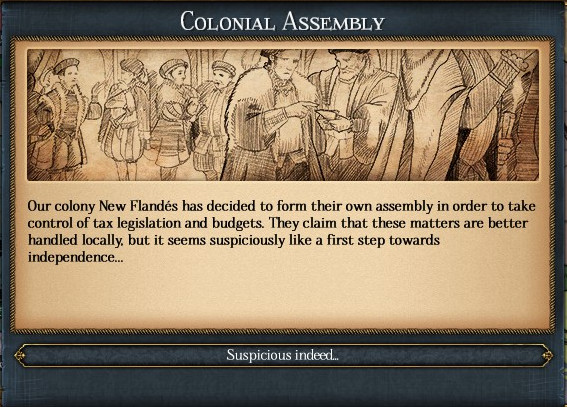 However, Sibilla's reforms were interpreted by some colonists as evidence that a hard line was the best way to seek redress from the central government. In the wake of the 1695/6 financial reforms, colonial radicals across much of the Gothic New World began agitating for extensive political and financial changes. Even New Flandès, one of the more conservative Gothic colonies, pushed for and successfully organized its own colonial legislature in response to Sibilla's reform package. 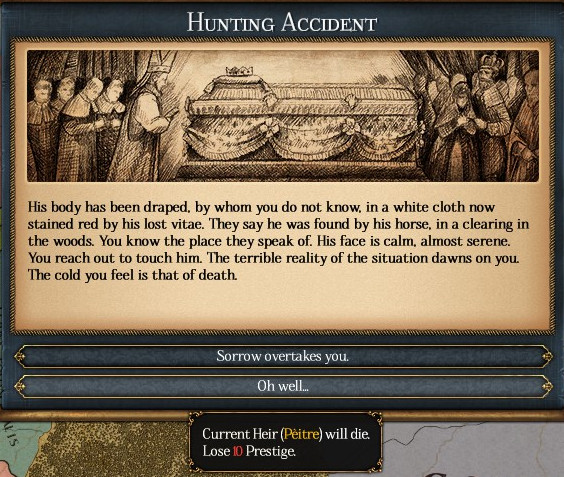 In the midst of this discontent, personal tragedy struck the court when Queen Sibilla's younger brother and heir to the throne, Prince Pèitre, died on April 20th, 1694, at the age of 39. Sibilla was well into her forties and faced no real prospect of having children by her age, but Pèitre had fathered a son shortly before his death, also named Pèitre. That toddler, the nephew of the queen, now became the heir apparent. 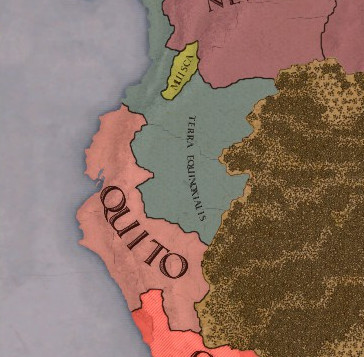 Queen Sibilla spent little time grieving, however. The tariff reduction reforms and the ongoing colonial backlash had left her smarting and yearning for ways to get more gold from the New World. To that end, she consulted with her ministers at court and ultimately agreed to a preliminary plan to expand slightly into the Quechuan territories of the Andes. Gothic troops massed in Terra Equinoxialis near the edge of the Quito realm, and in February of 1695 attacked one of Quito's frontier settlements. 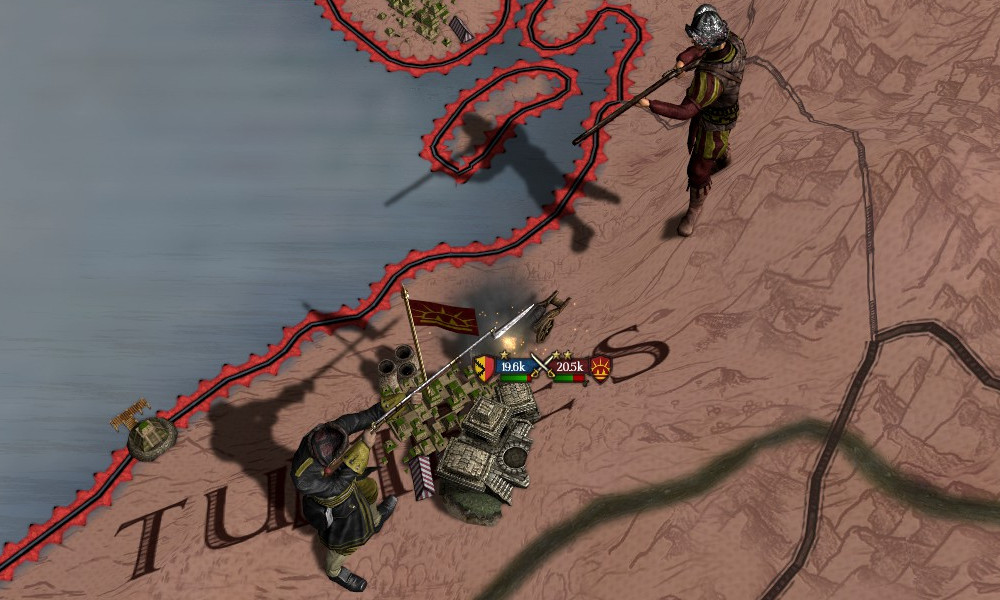 Quito's soldiers were somewhat westernized- they had adapted to gunpowder warfare readily enough, and taken some elements of European arms and armor, but their muskets were crude matchlocks as opposed to modern flintlocks, and their armies weren't trained in European methods of warfare at all.  As a result, Quito crumbled in the face of Gothic attacks, far more quickly than even the Goths had expected. 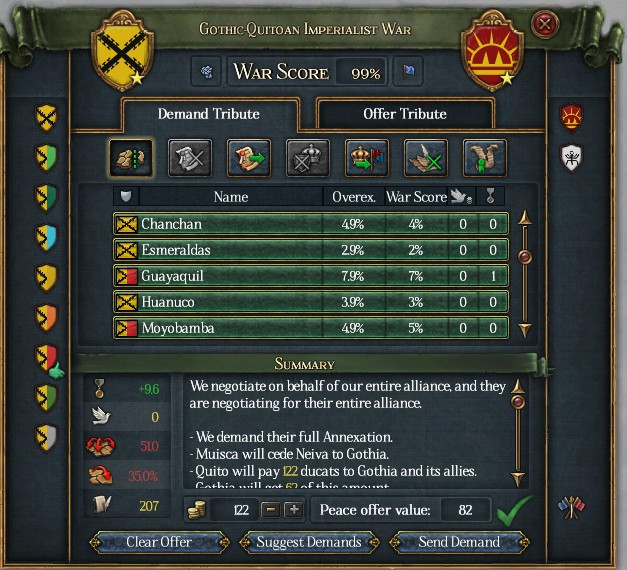 By March of 1697, the Goths occupied all of Quito's (and Musica's) lands, and decided to seize the chance while it was in their grasp. 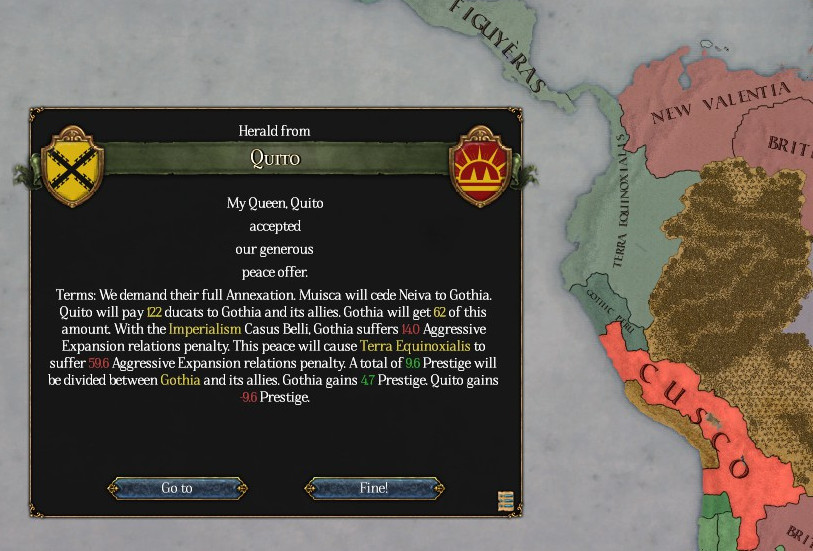 All of Quito and Musica were annexed by Gothia. Most of the lands were then ceded to the Gothic colony of Terra Equinoxialis, but a southern string of provinces bordering the Andean realm of Cusco were kept under crown administration.  The decision to expand southward and begin work on new colonies was informed in part by continuing unrest in Gothia's older colonies; New Gothia in particular was becoming restive yet again, and Sibilla's court was anxious to secure the loyalties of other colonial administrations and establish further counterweights in case New Gothia's belligerence became more militant.  An opportunity to expand Sibilla's new “counterweight” in the Andes came just a few months after the annexation of Quito, when rebels in Cusco crossed the border into Gothic territory and began raiding frontier outposts. 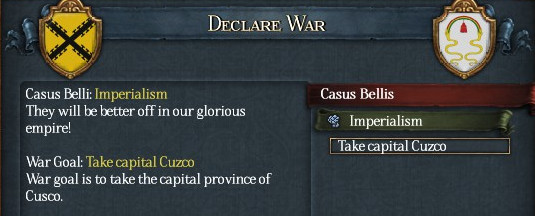 The raiders were easily defeated by Gothic forces still present in the area, but the government decided to go further and demand several concessions from Cusco to prevent another border incident. The leaders of Cusco, somewhat baffled by the impossible ultimatum, waffled and tried to negotiate a more reasonable settlement, but Gothia's envoys rejected this approach. War was declared, and Gothia again went to war in the Andes on October 7th, 1697.  Five months later, on March 21st, 1698, Queen Sibilla suddenly suffered a stroke and died at the age of just 45. The throne passed on to her 3-year-old nephew, crowned Pèitre V, and the direction of the war and the regency itself was left in the hands of Sibilla's widow and Pèitre's uncle, Amandus Hethinsunus.  Regent Amandus was an exceptional strategist in his own right; the war against Cusco continued through Sibilla's death and the regency with nary a hiccup in operations, and if anything progressed at a faster clip when he took over the general direction of the war. 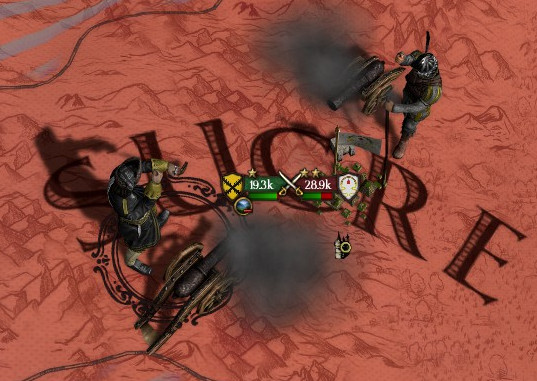 For its part, Cusco's armies suffered from many of the same flaws that Quito's armies had struggled with. The native realm had embraced some elements of European warfare, but still lagged behind technologically and organizationally, which enabled the Goths to easily defeat Andean armies even when outnumbered. 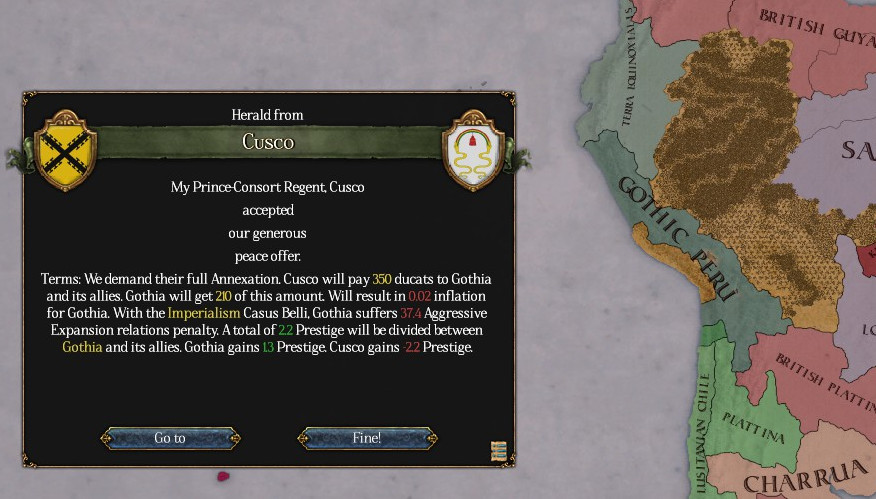 Unable to defeat Gothic troops in battle and slowly losing territories to the Gothic conquistadors, Cusco finally submitted on October 20th, 1699, two years after late Queen Sibilla had started the conflict. Over just 4 years, the Goths had rapidly expanded southwards along the Andes, its territories now touching British and Lusitanian colonies along the Plate River and in Chile. Its expansion had unnerved some colonial administrators, but the only realms that had felt truly threatened by Gothia's expansionistic sprint were now all part of the Gothic domain anyways. 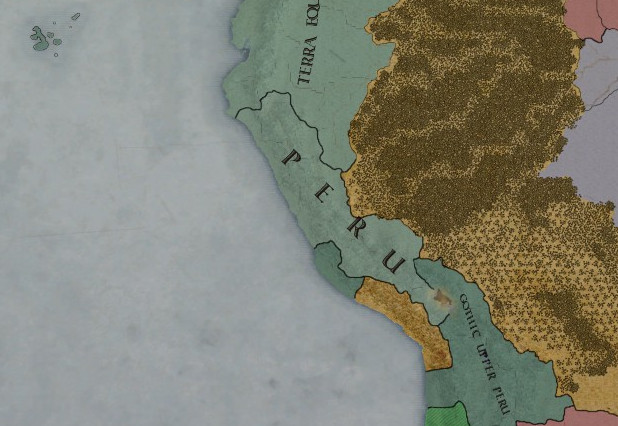 A year later, in May of 1700, the northern Quechuan territories were formally organized into the Viceroyalty of Peru. 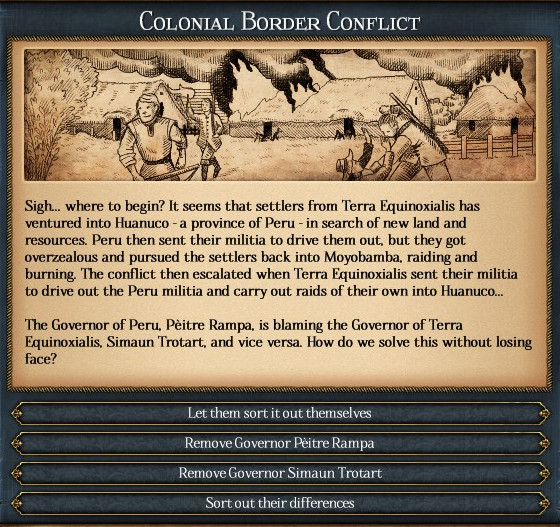 Worryingly, just two moths later the governor of Terra Equinoxialis provoked a boundary dispute with Peru. Was this belligerent attitude really what the equatorial colony mean to convey after Gothia helped expand it southward into the Andes? Startled by Terra Equinoxialis' move but worried by further agitation in the colonies, the Gothic court sided with the equatorial realm in the hopes of placating radicals. 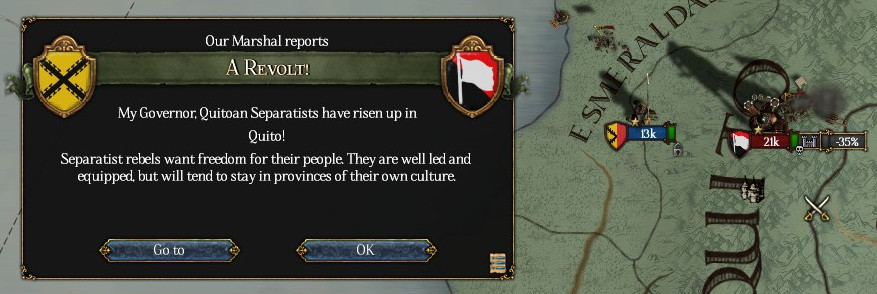 Peru was still too busy cementing its rule to protest, in any event. Quechuan rebels were a persistent problem; an uprising in the Andean city of Quito was successfully put down only because the rebels equipped themselves with pre-Gothic Conquest arms and armor. 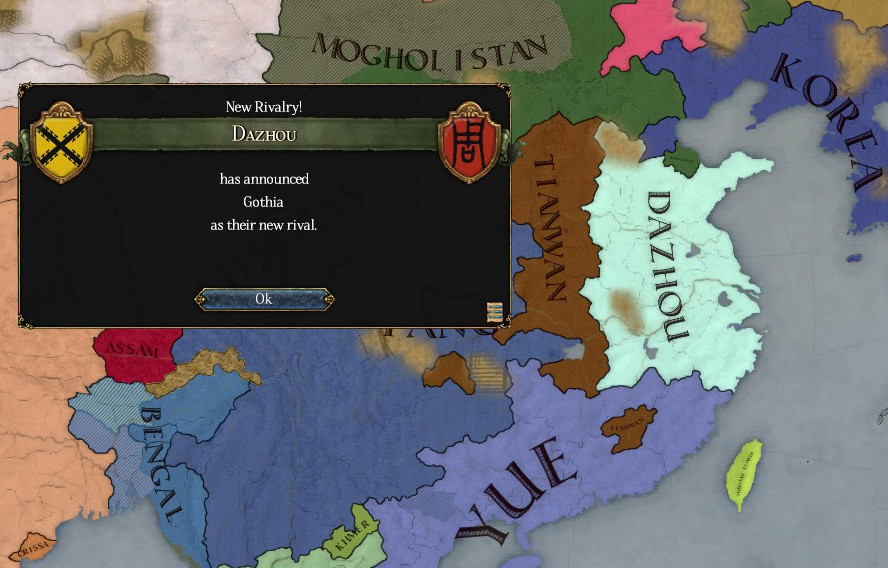 Peru and the Gothic Andes also attracted attention from the far side of the Pacific. As the old Timurid-led Mughalistan realm in northern China continued to contract and collapse, its Chinese successor states continued to grow and consolidate. One of the more ambitious states, Dazhou, began diplomatically engaging with states outside of China in the early 1700s. The Dazhou court felt some parallels between it and the recently-conquered Andean kingdoms, being separated from far-flung Gothia by a great ocean but being gradually encroached upon by Gothic colonies. Already concerned about the Gothic colonization of the East Indies, the conquest of the Quechuans finally spurred the Chinese kingdom to formally issue a protest and announce its objection to Gothic colonial aspirations.  Gothia took little note of the Dazhou declaration at the time, however, as it was still too preoccupied with affairs in South America. A further Quechuan revolt in the southern Andes prompted the Gothic government in late 1702 to follow up the establishment of Peru with the creation of a new Viceroyalty of Charcas. 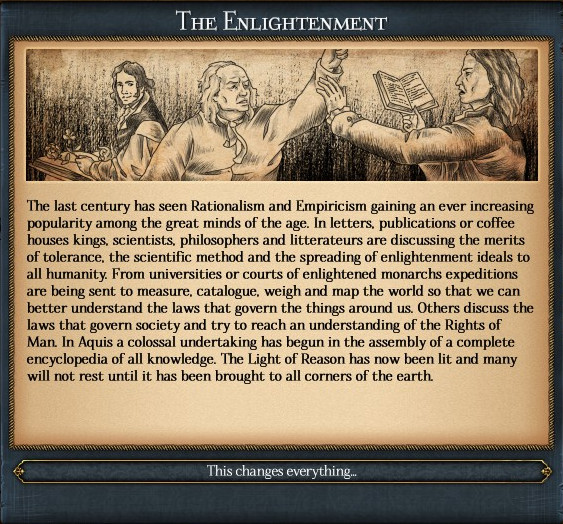 As Gothia expanded southwards in the New World, in Europe it experienced the first tremors of a movement that would eventually shake the globe- the Enlightenment. Grounded in post-Reformation skepticism and the proto-rationalist thought of the 17th century, the Enlightenment idolized reason, and its proponents would soon begin promoting new ideas about the rule of law and the nature of government.  1706 is generally marked as the year that the Enlightenment established itself in Gothia. Two key works of Enlightenment literature were written and published by Goths that year- Dialogues With A Mandarin and Ergo Sequitur. Neither piece discussed the application of Enlightenment philosophies, but both laid the foundations for later works. Dialogues purported to be the transcript of a Socratic debate between the author and a court official from the Manichaean realm of Mogholistan in China. Through the course of the work, the Manichaean essentially expounds on the idea of a dualistic split between mind and body, and goes on a lengthy tangent about the immaterial nature of the soul. Ergo Sequitur, by contrast, did not discuss souls at all. Asserting the truth of several axiomatic statements and definitions, Ergo Sequitur then attempted to derive hundreds of “truths”, treating philosophy like a very complex but solvable mathematical equation. “Everything can be known” is in fact one “truth” that the work ultimately claims to have proved. 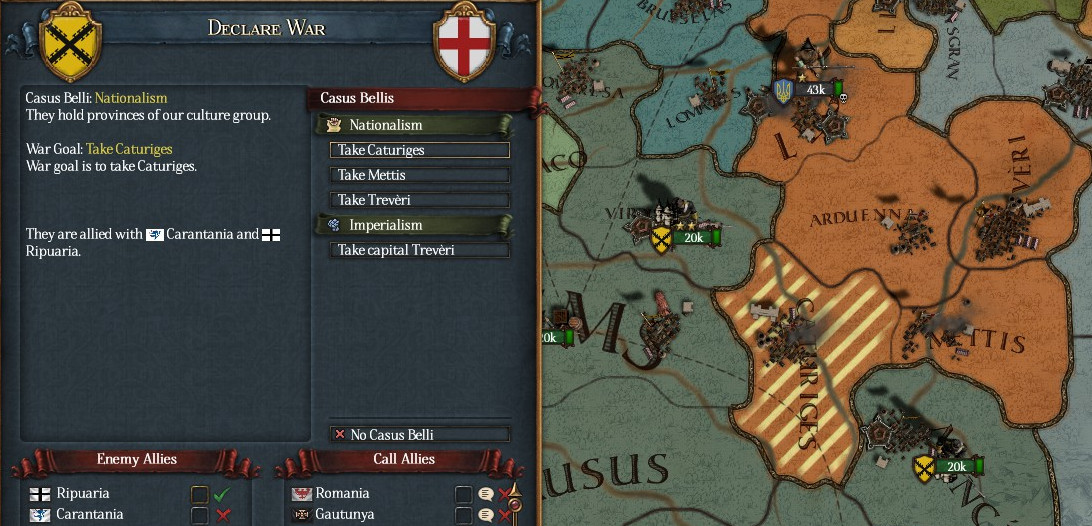 While continental philosophy began tackling big questions about the nature of the mind, the rulers of Gothia continued to grapple with the nature of the nation. In early 1708, towards the end of Amandus Hethinsunus' regency and the minority of Pèitre V, the government again asserted its right to rule all of “True Gothia”, and claimed the province of Caturiges as its own. The Duchy of Treveria, the actual owner of Caturiges, attempted to reject Gothic claims and sought peaceful negotiations, but Regent Hethinsunus in particular was keen to assert military power in the region. Treveria was relatively weak, and its only reliable ally, Ripuaria, was even weaker still. With these calculations in mind, Regent Hethinsunus declared war on Treveria on May 22nd, and Gothic troops moved to occupy Treverian territory the same day. 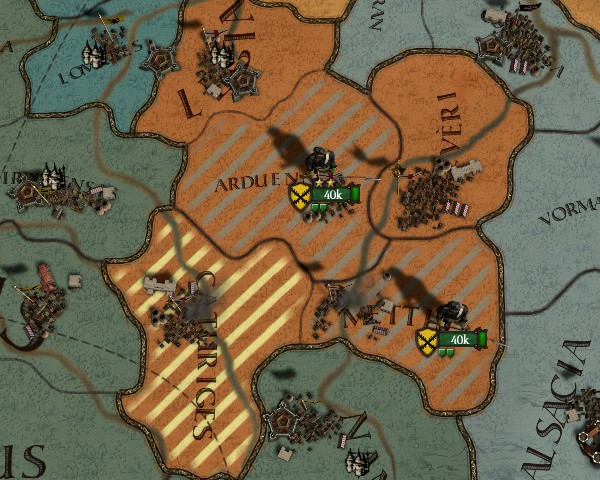 Little needs to be said about the war itself. Treveria and its ally Ripuaria simply could not field as many men as Gothia, and were easily swept aside by advancing Gothic troops. The only snaggle in Gothic plans was an ongoing dispute Treveria had with the Italian duchy of Verona, which meant that Caturiges itself was already occupied by a foreign power until the summer of 1709. 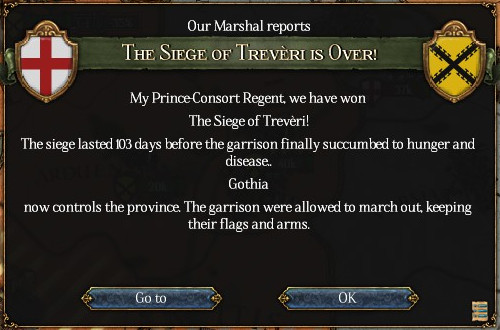 Treveria's preoccupation with Verona meant that Gothia could expand the scope of its campaign without encountering significant resistance. Trèveri itself, the capital of the duchy and one of the most ancient towns in the region, was captured by Gothic troops on October 27th, 1708. 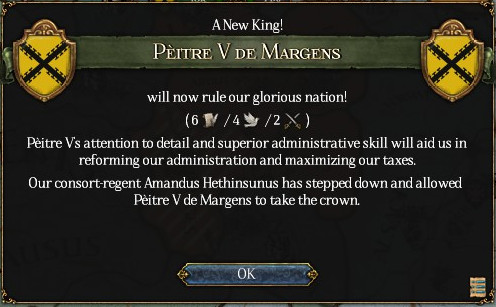 It was during the war that young King Pèitre V finally reached his majority. Amandus Hethinsunus was allowed to continue directing the war effort, but other than that his regency came to an end. 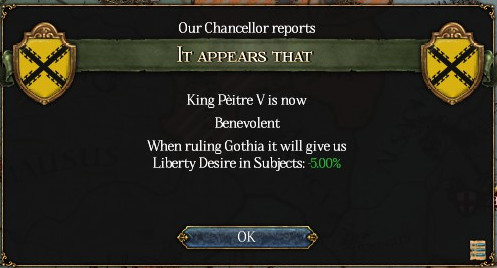 Aware of the unrest overseas during his aunt's reign, Pèitre V at his coronation expressed a keen desire to placate the Gothic colonies, and administer all the lands in Gothia's domains fairly and justly. 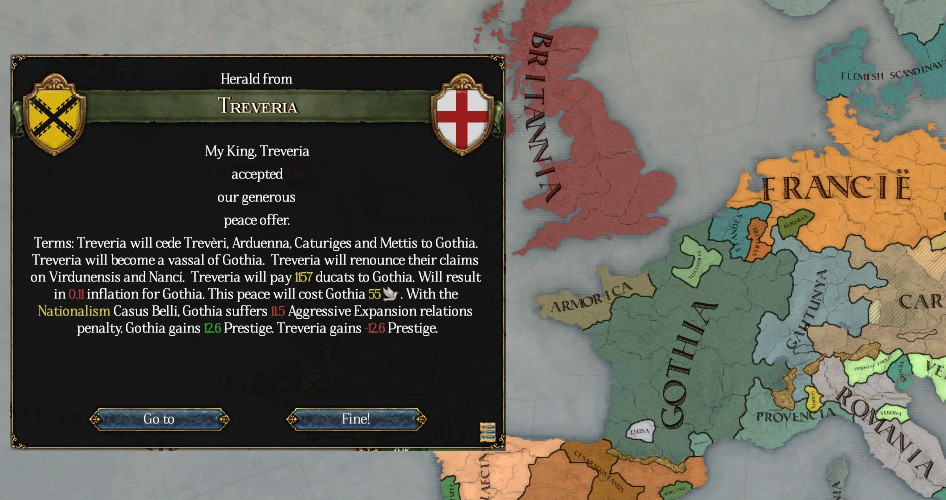 Capping his coronation and cementing his rule, Pèitre V signed the peace treaty concluding the war with Treveria on August 30th, 1709. Not only was Caturiges secured for Gothia, but the territories of Arduenna, Mettis and Trèveri itself were annexed, forcing the truncated Duchy of Treveria to relocate its court north to the provincial town of Lens. 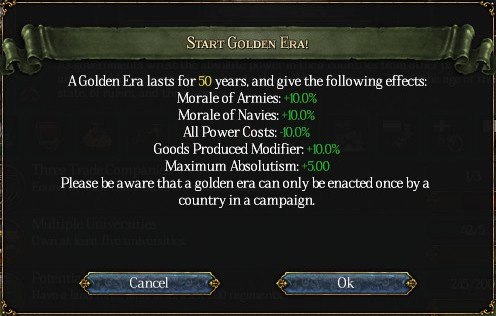 Gothia was now enjoying heights of power not felt since the days of Waltharius Magnus. With Pèitre V promising a benevolent reign, many observers both within and outside of Gothia began to suggest that the kingdom was now entering a golden age. As unrest continued to simmer in the colonies and the other powers in Europe continued to consolidate their own empires, whether the king and the kingdom could truly reach the lofty aspirations of a true golden age remained to be seen. 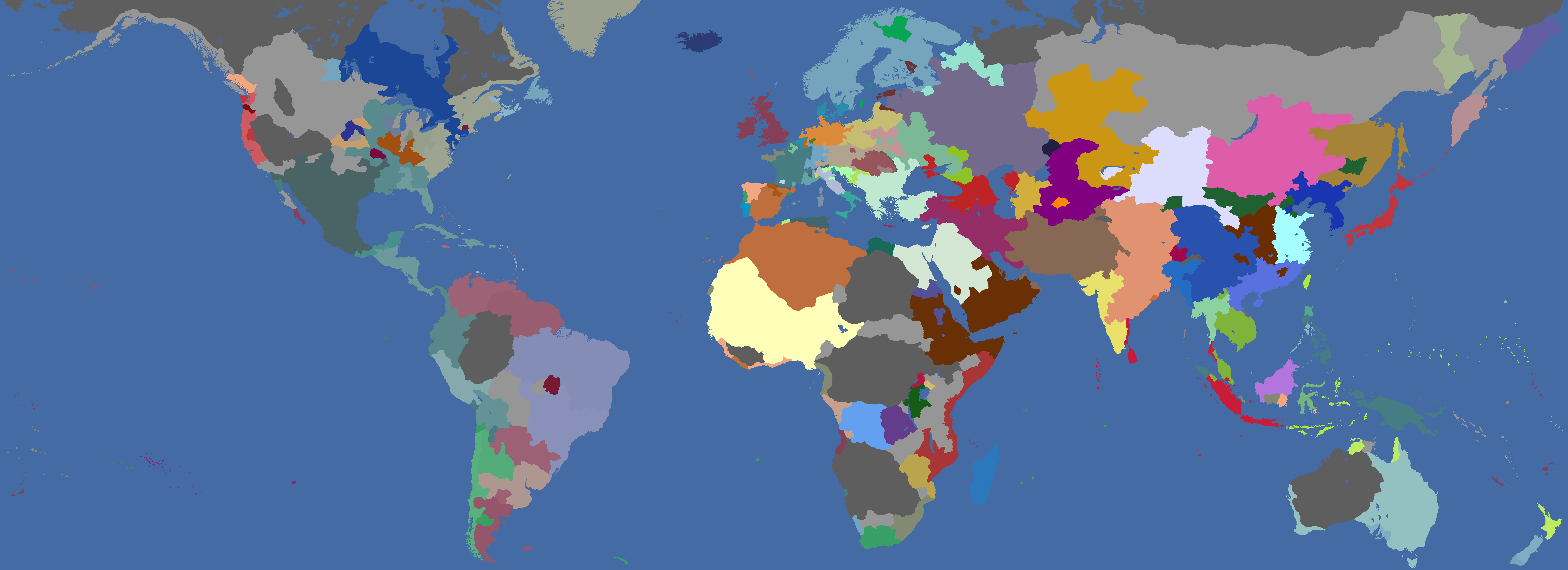
Ofaloaf fucked around with this message at 17:01 on Mar 14, 2018 |
|
|
|
Mauretania 
|
|
|
|
A Philippines (Sibylines?) without Manila feels wrong, but I suppose I'm biased
|
|
|
|
Rodyle posted:Mauretania
|
|
|
|
Hopefully Egypt and Thrace will get to touch tips soon
|
|
|
|
There's plenty of time for it to change, but all that open North Asian land might make for interesting times. It does seem to be a fairly common feature in conversion games, but how unlike our own history.
|
|
|
|
Certainly there would be an Evenki Empire coming out of there. If there were Evenkis in EU4, that is.
|
|
|
|
Negrostrike posted:Certainly there would be an Evenki Empire coming out of there. There are, they're just represented as faceless natives to be repressed and/or their existence ignored via Russian's Siberian Frontiers idea.
|
|
|
|
Gravity Cant Apple posted:There are, they're just represented as faceless natives to be repressed and/or their existence ignored via Russian's Siberian Frontiers idea. So come Victoria (Sibylla?) those lands will be filled with natives pops ripe for conquest? I kinda like that idea.
|
|
|
|
Japanifornia seems to be doing pretty well for themselves.
|
|
|
|
Luhood posted:So come Victoria (Sibylla?) those lands will be filled with natives pops ripe for conquest? I kinda like that idea. We'll have the Scramble for Siberia. Gotta get our timber somewhere, after all. That furniture isn't going to make itself.
|
|
|
|
The Scramble for Siberia, where everyone gets bogged down in the mud and dies from exposure.
|
|
|
|
It'll be like Victoria 1 where the UK always ends up taking a bunch of useless provinces in Siberia
|
|
|
|
Pakled posted:It'll be like Victoria 1 where the UK always ends up taking a bunch of useless provinces in Siberia Gotta colonize someone  
|
|
|
|
Whats that green blob in Finland?
|
|
|
|
One of the last vestiges of Götarike. Its current capital is actually in Gotland and it also still holds on to Åland, though.
|
|
|
|
Ofaloaf posted:One of the last vestiges of Götarike. Its current capital is actually in Gotland and it also still holds on to Åland, though. Stay strong, proud little Geats! Your time to rise again will come! Or not, whichever you fancy.  Speaking of which, when did Scandinavia unite? I can't remember seeing that one in the updates.
|
|
|
|
They didn't, it's just Norway being really big. Flandès still sits on Sjaelland, Scania and Jutland, which are all required to form Scandinavia.
|
|
|
|
Chapter 63: New Horizons 1709-1731  During the reign of Pèitre V, Gothia entered a great golden age. As the king's rule stabilized and the realm's colonies were pacified, the country began flexing its diplomatic power and military might more and more in Europe.  King Pèitre V had a lot going for him; he was young, he was already known as a benevolent figure and he had a knack for diplomacy and administration. As the regency came to a close, the king let it be known that he was eager to keep the peace with Gothia's unruly colonies. He also vowed to continue the House of Margens' policies of centralization and reassertion of Gothic power within its “rightful” lands, such as the “reassertion” of Gothia within the territories of the Duchy of Treveria and the “reassertion” of Gothic control over the vassalized rump duchy which remained after the transfer of provinces. 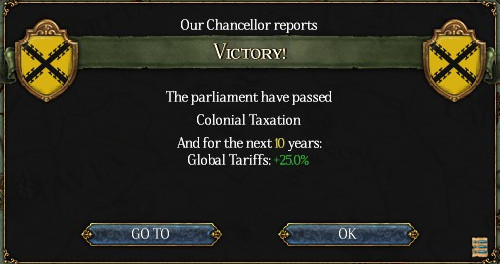 In a show of support for the new king, Gothia's Senate passed new legislation which granted the kingdom additional tariffs from the colonies, levied in such a way that the colonies would experience little economic duress even while they were pressed for more money. 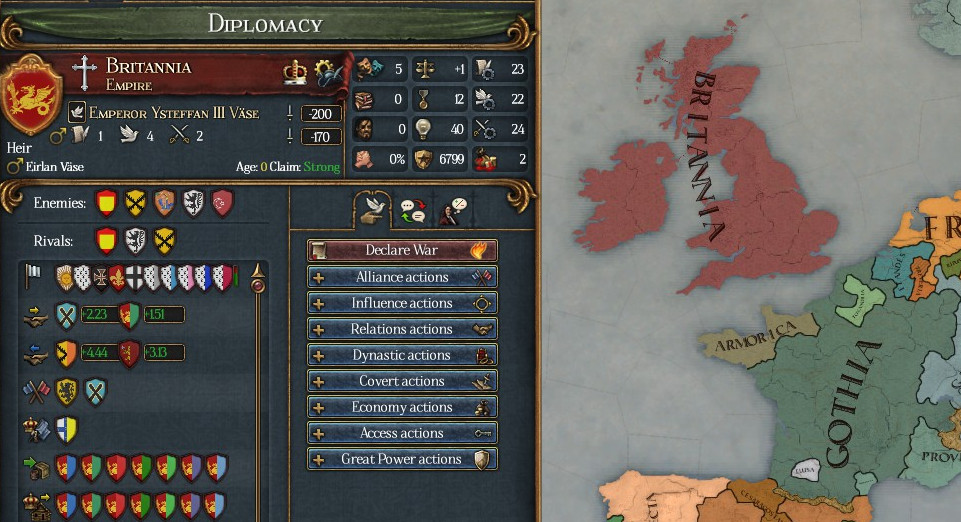 Colonial affairs also prompted the young king to consider his competitors in the New World; Britannia had long maintained a sometimes-neutral-sometimes-hostile attitude towards the Goths, but successive Gothic governments had always hesitated to confront the British because of their formidable navy. Pèitre V, however, suggested to confidants that he had figured out a way to weaken Britannia without direct confrontation.  Pèitre's idea ironically came from the British, who were in the process of supplying arms and diplomatic support to colonial dissidents in the Lusitanian colony of Chile. All King Pèitre proposed was to do the exact same thing with disaffected British colonies. 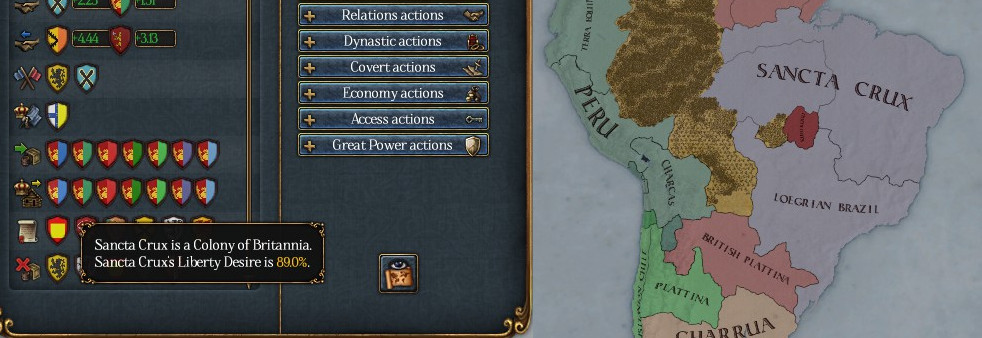 Sancta Crux, Britannia's oldest colony, was also its most developed, and was home to a well-established colonial intelligentsia which had embraced the Enlightenment with gusto. Already, colonial agitators had managed to attack some of Britannia's worst mercantilist policies. 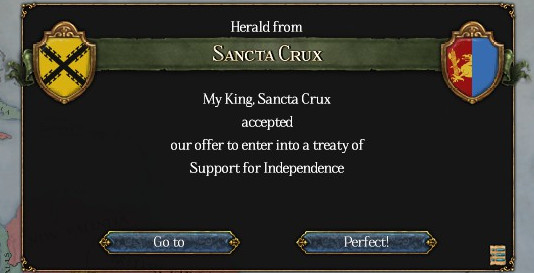 Perhaps Gothic support would not pay off immediately, but of all of Britannia's colonies, Sancta Crux seemed the most promising to support.  It was a good time to stir up discontent. As the Enlightenment spread across Europe, new ideas about governance and the rights of man were spreading along with it. These ideas were not limited to salons and academic writings, but were quickly embraced by radicals and agitators and far more militant sorts. 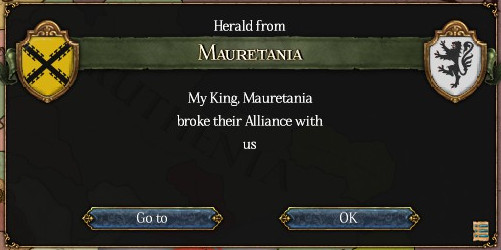 Even as Pèitre V shored up Gothia's position in the New World, its position in Europe was dealt a blow. In October of 1712, King Todosio III of Mauretania announced that his kingdom's alliance with Gothia was ending immediately.  It soon became clear that Todosio III had finally realized that Mauretania had missed out on the great colonial opportunities of the past few centuries, and was belatedly drawing up fantastical plans to conquer preexisting colonies for a new overseas empire, meant to complement Mauretania's continental empire in North Africa and Hispania. Concerned, Pèitre V ordered new fortifications be built along the Pyrenees to protect Gothia's southern border. The king did little else against Mauretania, however, as he was beginning to test new ways to assist the expansion of Gothia. 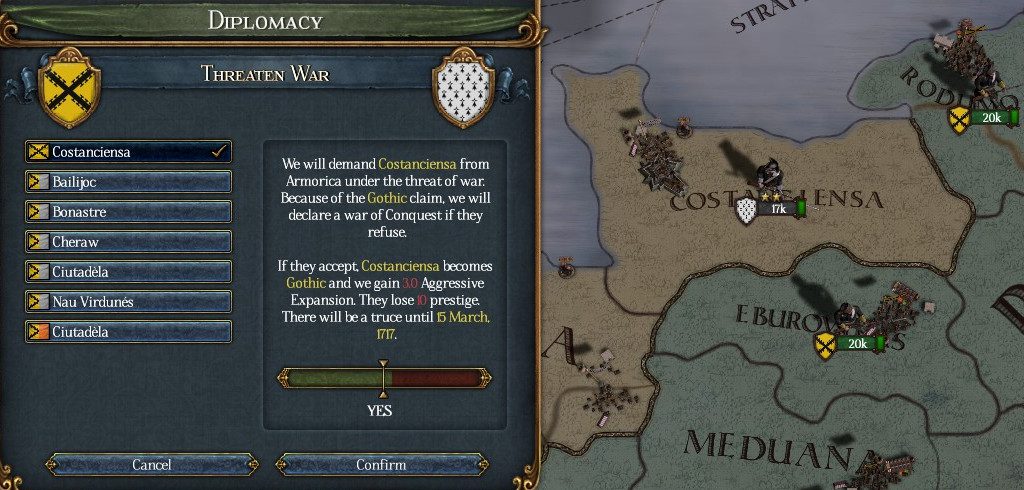 Armorica's continued existence had been a constant point of frustration for generations of Gothic officials. The realm always seemed so tantalizingly weak, so ripe for the picking, but its rulers had always managed to secure alliances with some of Europe's strongest crowns. In the 15th and 16th centuries it had curried a friendship with the British, but in the 17th and 18th centuries its loyalties had swung around to Gautunya, Gothia's eastern neighbor, ally and sporadically Western Roman Emperor. The Gothic court had always been reluctant to split with the Emperor, but as Gothia grew, the options for expansion without confronting Gautunya grew fewer and fewer. King Pèitre's gamble was to sabre-rattle and issue a forceful ultimatum with troops on the border, without ever explicitly declaring war. His hope was that Armorica would be cowed into ceding the territory called for in the ultimatum; if it worked, he hoped to used the same tactic in the future, and if it failed, he was beginning to accept the inevitability of a confrontation with the Roman Emperor.  Happily, Armorica submitted to Pèitre's demands, ceding Costanciensa to Gothia on March 28th, 1712, granting the kingdom another northern port. Although war with Gautunya had not occurred, it seems likely that the lack of any reaction from the Emperor prompted King Pèitre to think a little less of the Gothonian emperor, Amandus VIII. Gothonian support for Armorica would have led to the split in Gothic-Gothonian relations then and there, but it would have also demonstrated that the Emperor was willing and capable of fighting the Goths. As it was, Emperor Amandus' meek acquiescence merely emboldened Gothia. 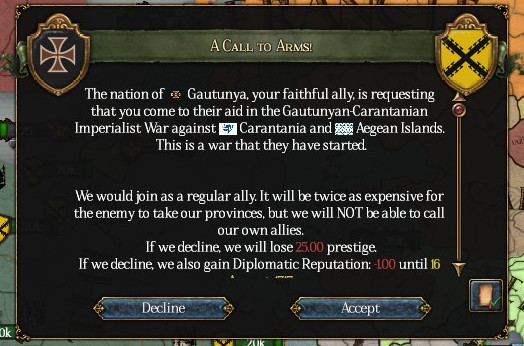 Amandus was actually keenly aware of the Goths' belligerent aspirations, and was trying to pursue a subtle diplomatic course to contain Gothia and protect his own realm. By letting Gothia obtain part of Armorica without a fight, he thought he had worked out an implicit deal with Pèitre V, securing friendship with Gothia in exchange for the territorial concession. He then sought to cement this “friendship” and channel some of Gothia's aggression by calling the Goths into a war against the Kingdom of Carantania in late 1712, pitting the belligerent Goths against the empire's old Slavic rivals between the Alps and the Danube. If Gothia managed to beat Carantania, then Gautunya's eastern border would be safe and it could focus on containing the Goths to its west. If the Carantanians beat the Goths, then Gothia would be crippled long enough for the Gothonians to work out a treaty with the Slavs and resolve their old rivalry. This was Amandus' calculation, at least. 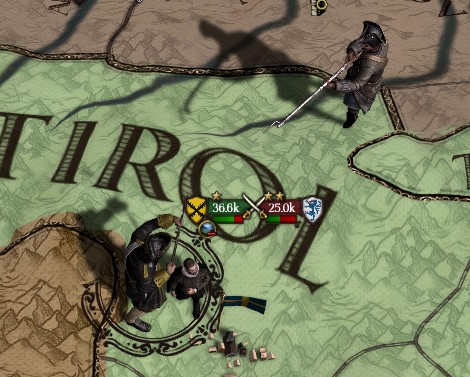 Carantania's armies were much weaker than Amandus had anticipated. King Gregur III of Carantania was a remarkably corrupt ruler, and had spent years covertly selling off Carantanian ordnance in exchange for under-the-table payments and selling army commissions in exchange for wholly legal sums of cash. Carantania's armies were woefully under-equipped and poorly organized as a result, and the Goths ran roughshod over them in the Alps and along the banks of the Upper Danube. 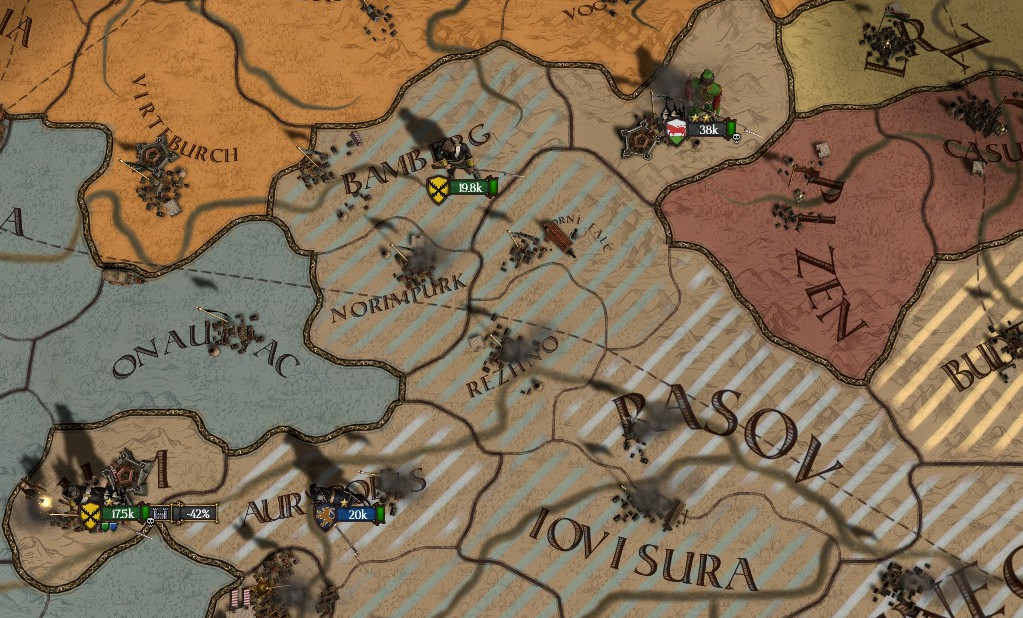 By September of 1713, just a year after the war had begun, the Goths had managed to conquer almost all of western Carantania, and were competing with the Sorbians to take the last few unoccupied provinces in the region. 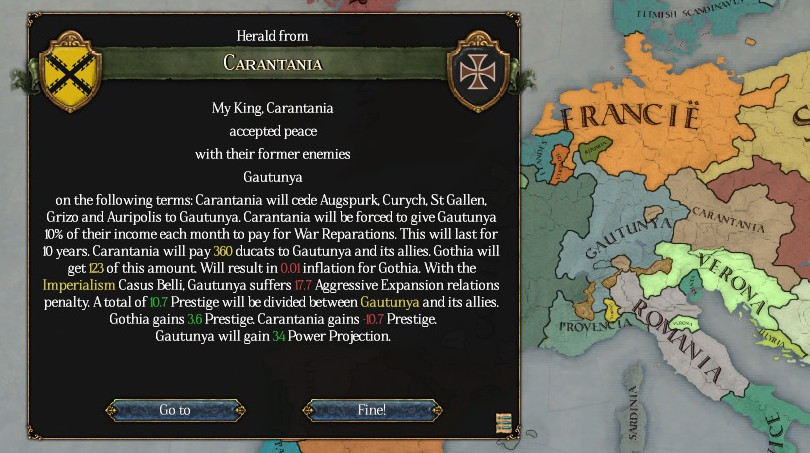 Such was the speed of Gothic advances that Imperial and Carantanian negotiators struggled to keep up with developments on the ground. It was only in July of 1715 that Gothonian and Carantanian envoys managed to negotiate a peace. Gautunya was to gain a large swathe of territories on the Gothian-Carantanian frontier, and, mimicking Gothia's own approach to territorial conquest, Carantania was intentionally left with a few enclaves deep in Gothonian territory, the aim being to give Gautunya some easy targets if and when another war between the countries erupted in the future.  Amandus also consoled himself with the news that a new wave of Enlightenment-inspired pamphlets were making waves across Gothia, promoting ideas about liberty and egalitarianism which were wholly at odds with the monarchy and the senatorial order which guided the country's affairs. Between Gautunya's rising strength and the foolhearty agitation now spreading in Gothia, Emperor Amandus was sure that the Goths could be confronted head-on if needed. 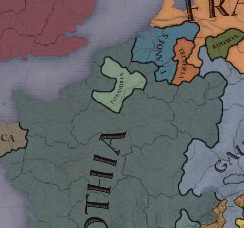 King Pèitre did not feel seriously threatened by the egalitarian agitators, however. He turned to the old trick of the House of Margens to satisfy unruly dissidents- nationalist expansionism. The old Duchy of Toxandria had been defeated by the Goths in the past, and through previous treaties had been enclaved by Gothia. Now sitting smack in the middle of the northern part of the Gothic kingdom, Toxandria was geographically and diplomatically isolated, only notionally supported by the Duchy of Lijfland in the Baltic. 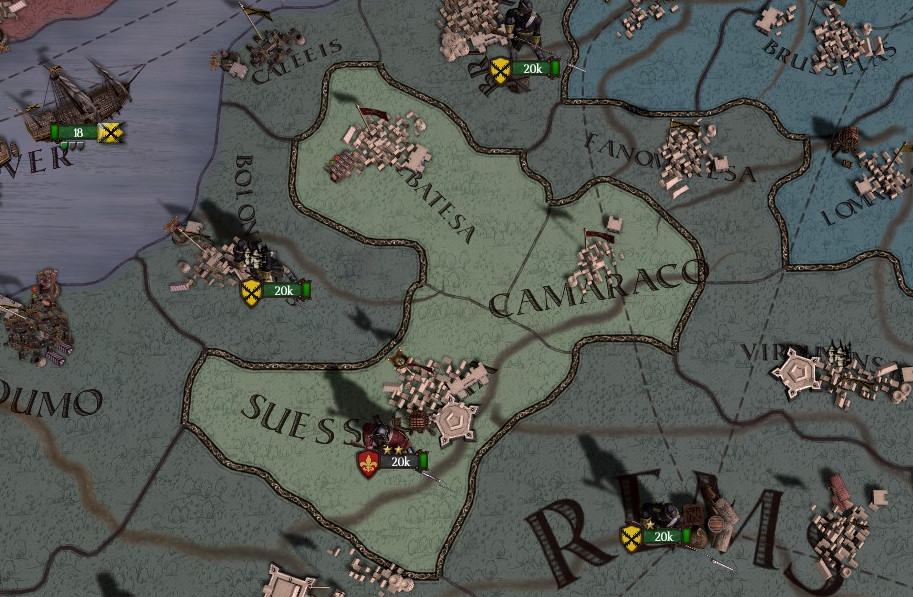 After carefully amassing the kingdom's armies on its borders, King Pèitre decided to formally demand Toxandria's submission and annexation. To Pèitre's surprise, Toxandria refused to submit, and so Gothia went to war on January 6th, 1718. 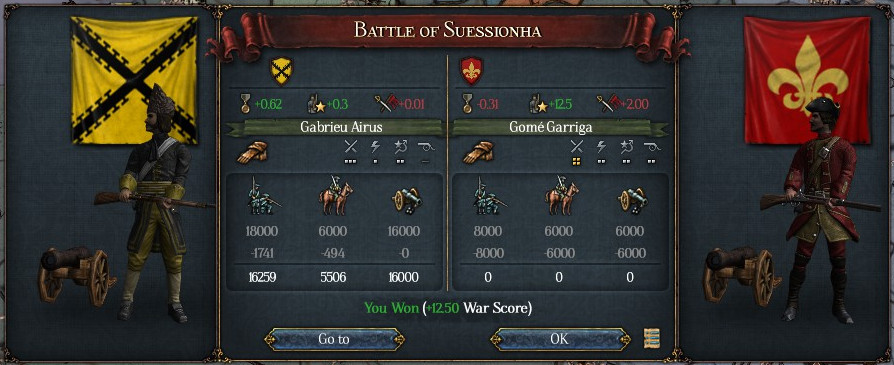 The following war had only one set piece battle, at Suessionha on January 28th, 1718. Gothic troops outnumber their Toxandrian counterparts 4 to 1 and obliterated them on the battlefield. This destroyed Toxandria's only standing army, leaving the Gothic armies to besiege the capital and scattered fortified cities of the old duchy in peace. 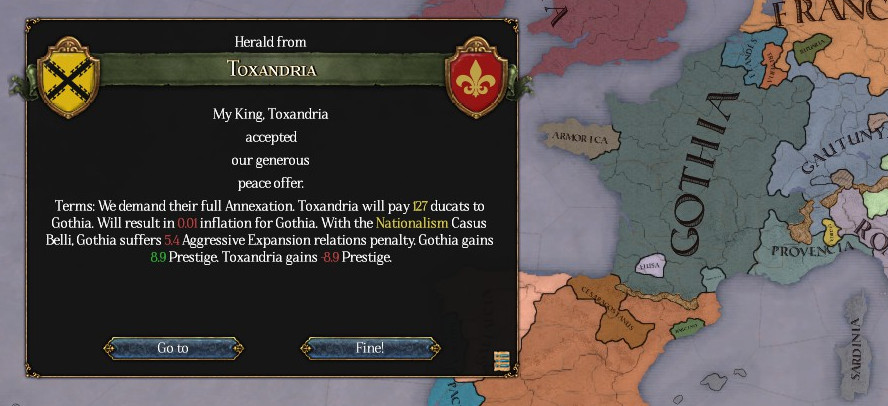 By March of the following year, all of Toxandria had submitted to Gothic occupiers. The ducal government, seeing no other option, finally surrendered to the Goths, and so on March 3rd, 1719, King Pèitre V announced that the Duchy of Toxandria had formally recognized the Kingdom of Gothia as its rightful sovereign, and that Toxandria would be incorporated into the Gothic realm with all the Toxandrians' (unmentioned) ancient rights preserved. 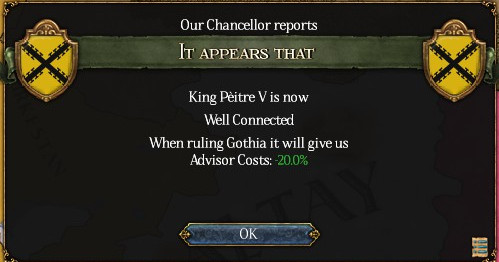 As King Pèitre matured and bounded from success to success, he began to collect a larger and more refined entourage at court. 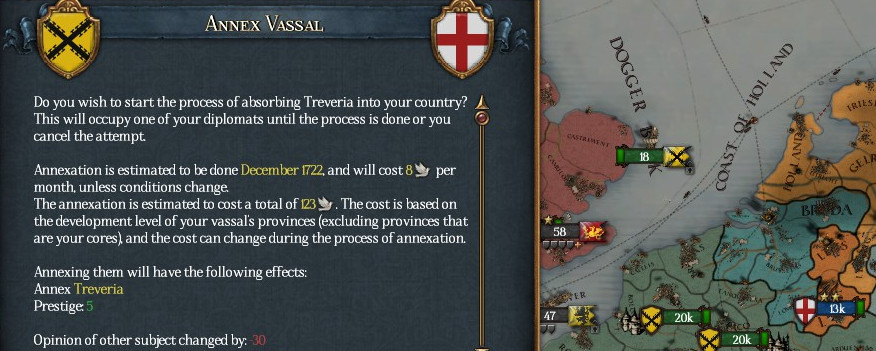 This clique of new advisers quickly began to advocate two specific policies: First, the conquest of Toxandria should be followed up by the integration of already-vassalized Treveria, to make the move against Toxandria appear more like part of a broader plan to merely centralize power in Gothia. Secondly, they told Pèitre to get it over with and formally break with Emperor Amandus of Gautunya. 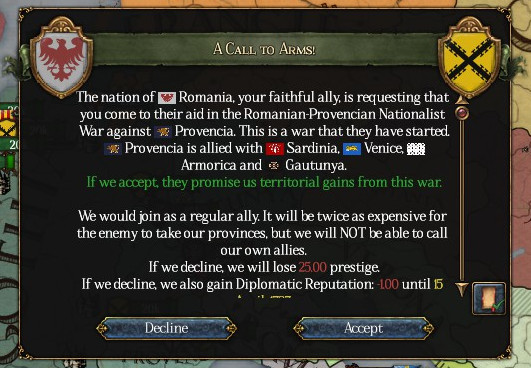 The king resisted, but his hand was forced when his southern ally, the Italian kingdom of Romania, declared war on the Gallic duchy of Provencia on May 18th, 1722. Provencia was an old foe of Gothia's, but it was allied to Gautunya, which was already preparing to assist Provencia in the war. If Gothia wanted to honor its alliance with Romania and preserve its diplomatic reputation, it would have to sever its alliance with the Emperor and attack the Gothonians. Tipping the calculation in favor of war, Provencia was also allied to Armorica, whose European and colonial territories were coveted by Gothia but were poorly defended. With the benefits of war outweighing the potential costs of severing with the Emperor, Pèitre V accepted the call to arms. 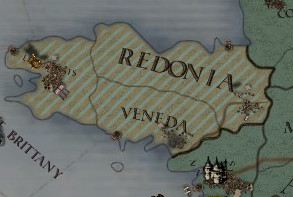 Armorica was remarkably easy for Gothia to take. The Armoricans had not recovered from their earlier loss of Costanciensa, and had only a token force assembled together in Europe. A single Gothic army quickly destroyed the Armorican force in battle, and then, uncontested, occupied Armorica's European territories.  It took months for Gothic troops to scramble to the eastern front. Most of Gothia's armies had still been stationed in the northwest, by the borders of Armorica, and were not ordered to march until after Gothia had joined the war. Gautunya's troops, however, had scarcely taken advantage of this delay, as they had been preoccupied with protecting the Alpine passes and marching troops south (across the Gothic frontier) to reinforce Provencia's armies. 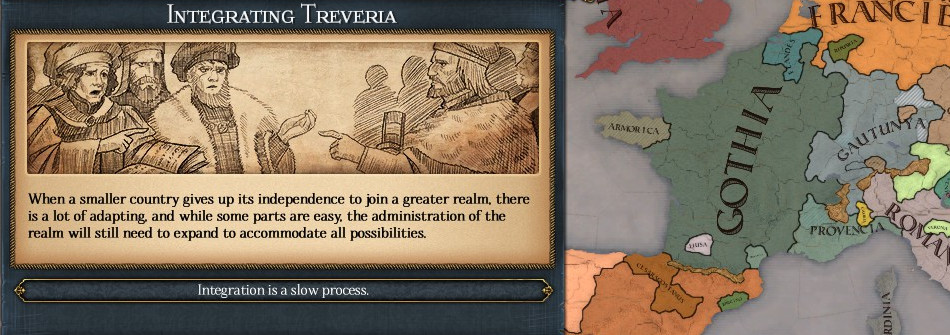 During these early stages of the war, Treveria formally submitted itself to full Gothic control, claiming that Treveria's “long ties in tongue and tradition” with Gothia meant that it had to give it its full support against the Emperor. That the Emperor and Gautunya also spoke a dialect of Gautés was not mentioned in Treveria's declaration. 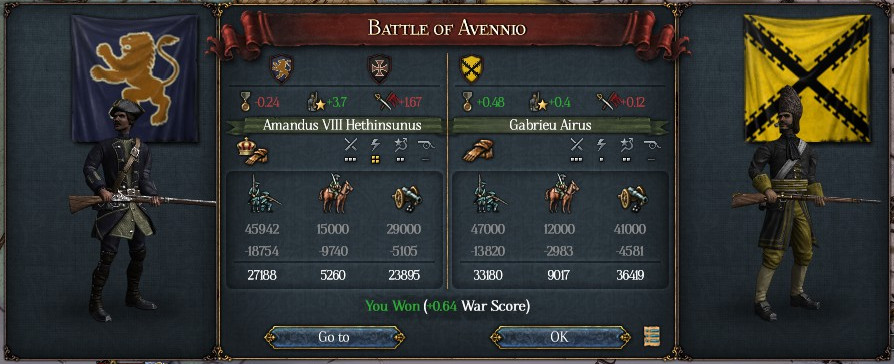 The timely integration of Treverian troops was much appreciated by Gothia. The main army of Treveria, the Exercitus de Mettis, joined with the southern Gothic force just in time to defeat a Provencian army near the town of Avennio.  To the north, another Gothic force managed to capture Gautunya's capital, Besontion, on the 11th of September, 1723. Between Gothia and Romania, Gautunya and Provencia were caught in a tightening vice and were rapidly losing ground on all sides. There was just too much territory to defend, while both Gothia and Romania were able to focus their efforts on a single front of attack each. 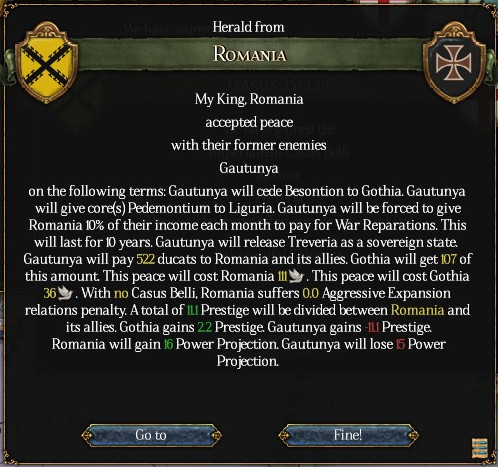 Faced with the apparent collapse of his defences, Emperor Amandus surrendered to Romania. Gautunya was forced to cede Besontion to Gothia, and the humiliated imperial court was forced to move to the provincial town of Laudun. No peace had been negotiated with Provencia however, leaving the Gallic duchy isolated in its continuing war with Romania and Gothia. 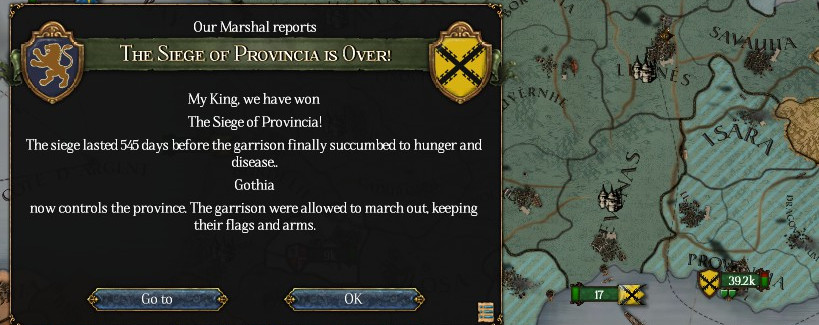 Without imperial support, Provencia's defenses began crumbling. The duchy's capital in Provincia proper was taken by Gothic troops on May 20th, 1724, but perhaps motivated to prove themselves better than the imperial court, the Provencian government refused to fold immediately, and instead moved to the western Alps to continue the fight. 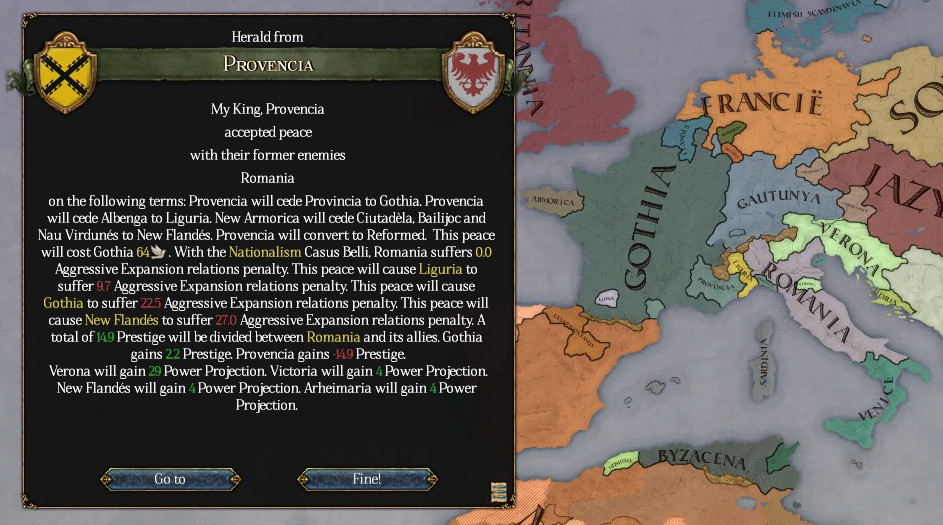 The war was prolonged, but the tide of victory could not be turned back. After another three years of bitter warfare, the exhausted Provencian government was finally compelled to surrender to the Romanian-Gothic alliance. European Armorica was preserved, but a slice of its American colonies were ceded to the Goths. More beneficial to Pèitre V was the cession of Provincia Proper to Gothia, where it was quickly renamed 'Provinça' in the Gothic language. This gave Gothia control of the mouth of the Ròse river, which ran through the Gothic capital upstream, and granted it much greater access to the Mediterranean trade network.  Keen to demonstrate his strength and rolling in cash after his victory over Emperor Amandus, in 1730 Pèitre V made one of the grandest gestures possible when he announced his intention to begin construction of a canal across the Isthmus of Panama. Not only would such a canal be a monumental declaration of Gothic power, but it also posed a direct challenge to Britannia and Lusitania. If such a canal was completed, ships heading to the Pacific from Europe would no longer need to pass by British and Lusitanian colonies in South America, diminishing trade in the region and seriously crippling the prosperity of South American colonies. By 1731, Gothia's golden age was in full swing. The Goths had defied the imperial government and emerged unscathed, the Gothic military was strong enough to intimidate a neighbor into ceding territory without a shot being fired, and ground had just been broken in Panama in what was surely to be a monumental but successful project. There was another side to this coin. The Goths had let one major alliance decay into envy and distrust, and had outright betrayed another ally. It had no immediate neighbors on friendly terms on it anymore. Gothia had also just sunk a fortune into a project with no real estimated completion date and little idea of how to actually build the thing to begin with. Its finances and its relations with the colonies were in strong enough shape for the moment, but would that last when the skills of Pèitre V could no longer be called on? The world in 1731: 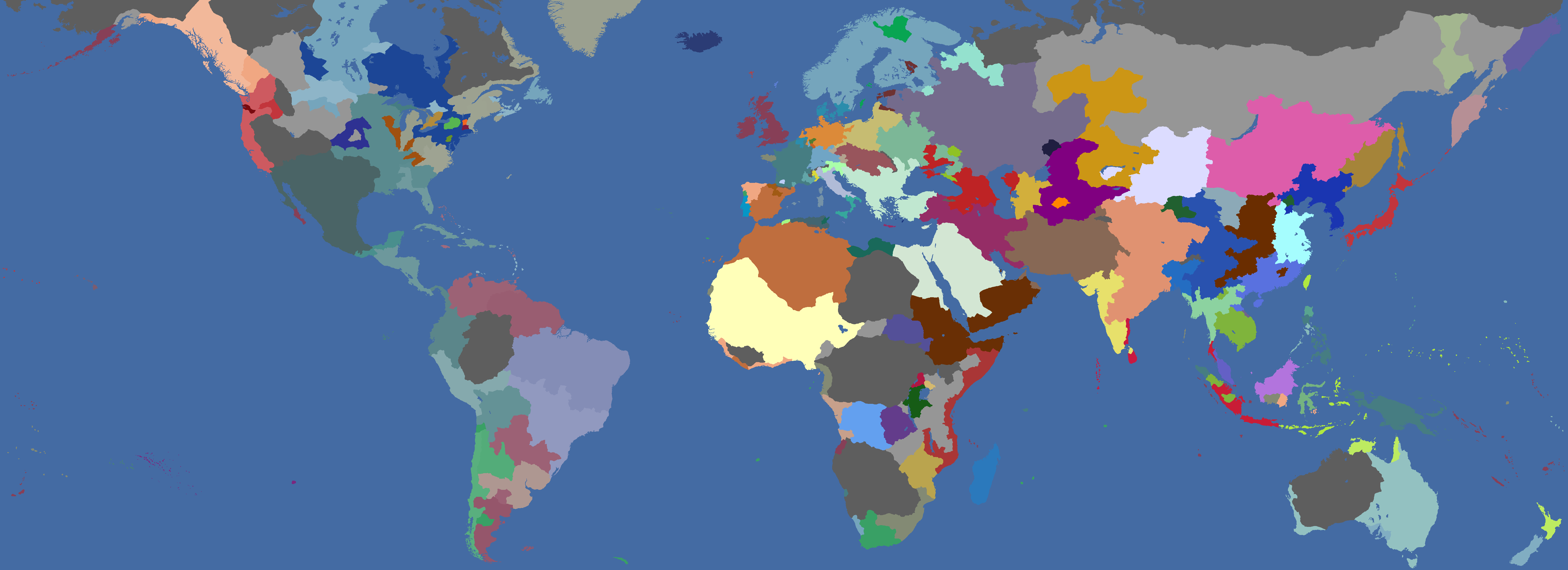
|
|
|
|
What part of Armorican America got annexed? Also, if I'm looking at the map right, we've reached that fun point of late game colonization where one of the Spanish kingdoms is setting up in Alaska for no reason
Raserys fucked around with this message at 12:56 on Mar 23, 2018 |
|
|
|
Raserys posted:What part of Armorican America got annexed? Also, if I'm looking at the map right, we've reached that fun point of late game colonization where one of the Spanish kingdoms is setting up in Alaska for no reason Looking at the last two maps side by side, it looks like we got most of South Carolina and the one sliver of Wisconsin they had.
|
|
|
|
Hype for 10,000 Goths and 100,000 ducats to die in the Panama
|
|
|
|
Building the Panama Canal 200 years early is gonna result in some serious fun (and also probably a literal million deaths).
|
|
|
|
I like to think if this attempt to build the Panama Canal fails, it's going to taint the project forever and cause it to not get built for real until much later than in real life, if at all.
|
|
|
|
We can make the lock walls out of bone.
|
|
|
|

|
| # ? Apr 25, 2024 16:22 |
|
Funky Valentine posted:We can make the lock walls out of bone. At the very least plenty of ghost stories about previous builders staring at the passing ships from the distance late at night.
|
|
|





























